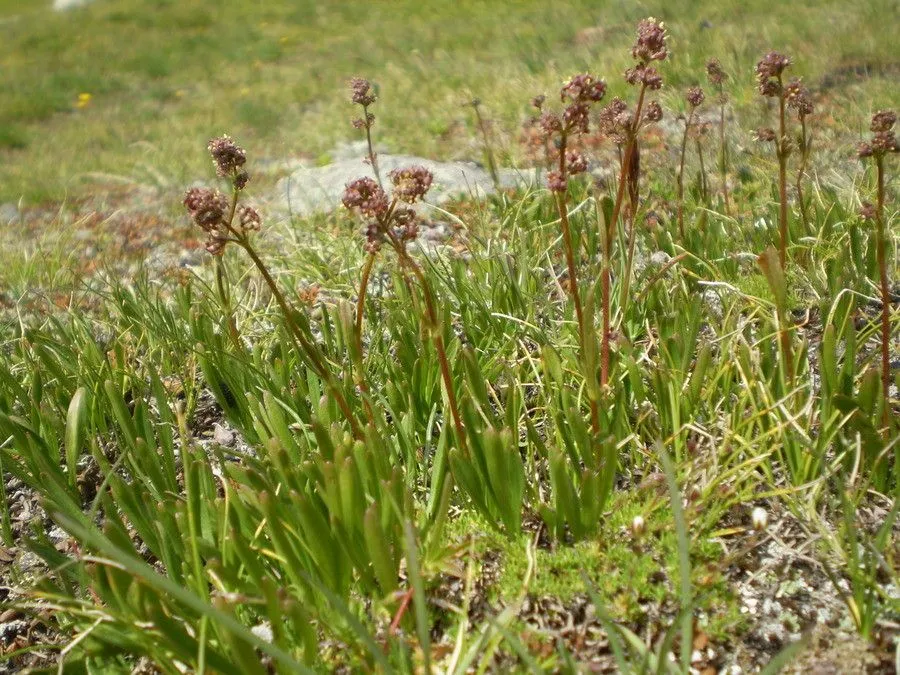
Author: L.
Bibliography: Sp. Pl.: 32 (1753)
Year: 1753
Status: accepted
Rank: species
Genus: Valeriana
Vegetable: False
Observations: Alps
Celtic valerian is a captivating member of the Caprifoliaceae family, known for its unique characteristics and historical significance. Found primarily in the majestic Alps, this plant thrives in the mountainous terrain, an environment that has shaped its resilient and hardy nature.
The scientific community recognizes this plant by its formal name, Valeriana celtica. The species was first described in the comprehensive botanical work “Species Plantarum” published in 1753 by the esteemed botanist Carl Linnaeus, often abbreviated as L. This seminal text laid the foundation for modern botanical nomenclature and classification, underscoring the importance of Valeriana celtica in the botanical world.
Celtic valerian grows in environments where few other plants can compete, making it a noteworthy subject of study for botanists and plant enthusiasts interested in alpine flora. Its ability to adapt and thrive in harsh, rocky environments highlights its evolutionary success and makes it a plant of considerable interest for those studying ecology and plant adaptation mechanisms.
This plant not only contributes to the biodiversity of the Alpine regions but also holds potential benefits that extend beyond its immediate environment. Historically, various valerian species have been utilized in traditional medicine for their sedative properties, though it’s crucial to consult modern scientific studies for specific uses and efficacy related to Celtic valerian.
In summary, Valeriana celtica stands as a remarkable species within the Caprifoliaceae family, exemplifying the beauty and resilience of alpine botanical life. Its classification dating back to Linnaeus’s 1753 documentation adds to its historical and botanical significance, making it a plant worthy of admiration and study.
En: Celtic Valerian
Ar: سنبل رومي
Az: Kelt pişikotu
Eu: Akara zeltiko
Fr: Valériane celte, Nard celtique, Spic celtique
De: Echter Speik, Keltische Narde, Keltischer Baldrian
It: Nardo celtico, Valeriana celtica
Es: Prava špajka
: Celtic valerian
Taken Jul 18, 2020 by Werner Rom (cc-by-sa)
Taken Aug 15, 2014 by Photoflora – Jean-Luc TASSET (©)
Taken Aug 15, 2005 by Photoflora – Jean-Luc TASSET (©)
Taken Jul 15, 2010 by Photoflora – Jean-Luc TASSET (©)
Taken Oct 16, 2022 by Goulidan Finch (cc-by-sa)
Taken Mar 25, 2008 by Tela Botanica − Christophe GIROD (cc-by-sa)
Taken Mar 25, 2008 by Tela Botanica − Christophe GIROD (cc-by-sa)
Taken Mar 25, 2008 by Tela Botanica − Christophe GIROD (cc-by-sa)
Taken Mar 25, 2008 by Tela Botanica − Christophe GIROD (cc-by-sa)
Taken Jul 21, 2011 by Tela Botanica − Mathieu MENAND (cc-by-sa)
Taken Jul 18, 2020 by Werner Rom (cc-by-sa)
Taken Aug 15, 2005 by Photoflora – Jean-Luc TASSET (©)
Taken Mar 25, 2008 by Tela Botanica − Christophe GIROD (cc-by-sa)
Taken Jul 15, 2002 by Photoflora – Benoit BOCK (©)
Taken Jul 15, 2012 by Photoflora – Benoit BOCK (©)
Taken Jul 15, 2012 by Photoflora – Benoit BOCK (©)
Taken Jan 1, 1970 by Photoflora – L’Abbé COSTE (©)
Taken Jul 21, 2011 by Tela Botanica − Mathieu MENAND (cc-by-sa)
Taken Jul 15, 2002 by Photoflora – Benoit BOCK (©)
Taken Aug 15, 2005 by Photoflora – Jean-Luc TASSET (©)
Taken Jul 15, 2002 by Photoflora – Benoit BOCK (©)
Ph maximum: 4.5
Ph minimum: 4.0
Light: 8
Atmospheric humidity: 6
Bloom months: [‘jun’, ‘jul’, ‘aug’]
Soil nutriments: 1
Family: Myrtaceae Author: (F.Muell.) K.D.Hill & L.A.S.Johnson Bibliography: Telopea 6: 402 (1995) Year: 1995 Status:…
Family: Rubiaceae Author: Pierre ex A.Froehner Bibliography: Notizbl. Bot. Gart. Berlin-Dahlem 1: 237 (1897) Year:…
Family: Sapindaceae Author: Koidz. Bibliography: J. Coll. Sci. Imp. Univ. Tokyo 32(1): 38 (1911) Year:…
Family: Asteraceae Author: A.Gray Bibliography: Pacif. Railr. Rep.: 107 (1857) Year: 1857 Status: accepted Rank:…
Family: Fabaceae Author: Medik. Bibliography: Vorles. Churpfälz. Phys.-Ökon. Ges. 2: 398 (1787) Year: 1787 Status:…
Family: Aspleniaceae Author: (Cav.) Alston Bibliography: Bull. Misc. Inform. Kew 1932: 309 (1932) Year: 1932…